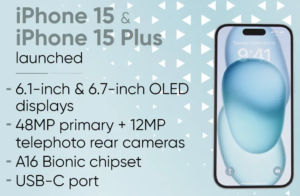
If you’re tired of the company’s desktops or laptops, consider these Windows and Linux-powered options.
APPLE MACBOOKS AND Macs are undoubtedly good hardware, but they are also closely tied to macOS, an operating system that is not for everyone. What if you want to play Fortnite or run computer-aided design programs? And now that Apple is transitioning to its own M1 chips, if you want to run Linux, your only option is PC hardware.
With that in mind, we’ve put together a list of great Windows and Linux-based alternatives for the most popular Mac models. From the lowliest to the beastly 32-core prosumer rigs. Switching to PCs means you’ll be able to get the latest and greatest computers at a wide range of prices from any number of manufacturers, without having to light prayer candles at a Steve Wozniak shrine.
MacBook Air Alternatives
Dell XPS 13 ($999)
Specs to look for: Intel Core i5, 8 GB RAM, 256 GB SSD

Apple’s most portable laptop is one of our favorites. The new MacBook Air (9/10, WIRED Recommends) is powered by Apple’s M1 chip and fast, with stellar battery life. The Air ($999+) is defined by its form factor; sacrifices power and ports to stay thin and light.
Fortunately for PC lovers, there are plenty of Air competitors. Top of the list is definitely Dell’s XPS 13 (9/10, WIRED recommends). It shares the Air’s slim, lightweight design, solid construction, and all-metal casing. The XPS 13’s extremely slim bezels mean the screen is larger than the Air’s, and if you opt for the 4K display, it’s also considerably sharper.
13-Inch MacBook Pro Alternatives
Lenovo Yoga 9i ($1,290)
Specs to look for: Intel Core i7, 16 GB RAM, 512 GB SSD
The 13-inch MacBook Pro ($1,499+) is slightly thicker and therefore more powerful than the Air. The PC market has an overwhelming number of options in this space, making your decision overwhelming, but the standout of the dozens of laptops I’ve tested this year is Lenovo’s 14-inch Yoga 9i. With an 11th-gen Intel Core i7 chip, 16 gigabytes of RAM, and a 512-gigabyte drive, it’s still a little less than a similarly configured 13-inch MacBook Pro.
While this isn’t going to be a gaming powerhouse, it will suffice for the casual gamer. Intel’s integrated Iris Xe graphics card is capable of sustained 60 frames per second at 1080p resolution, which should be perfectly fine for low-key games like Fortnite or League of Legends. That extra power is also useful for video editing, though if that’s your primary use, take a look at our next section.
16-Inch MacBook Pro Alternatives
Asus ProArt StudioBook Pro 17 ($2,600)
Specs to look for: Intel Core i7, 32 GB RAM, 1 TB SSD
The 16-inch MacBook Pro ($2,399+) is a beast of a laptop aimed at creative professionals for video editing, color matching, 3D rendering, and all those other processor-intensive tasks that come with content creation. It comes at a huge price and sadly so do the PC equivalents. If you want video editing power, you have to pay for it.
One of the best PC answers to the 16-inch Apple is the Asus StudioBook Pro. The top-end model offers a six-core Intel Xeon processor, an Nvidia Quadro RTX graphics card, 32 gigabytes of RAM, and a 2-terabyte drive. That’s enough to handle the most demanding tasks.
Video edition? Check. Render 3D models? Check. 4K screen? Oh no. The screen resolution is close (3840 x 2160), and more importantly for this use case, it offers impressive color calibration (for a laptop). The Pantone Validated display covers 97 percent of the DCI-P3 wide color gamut, which is as good coverage as you’ll get in this form factor. As a bonus, the StudioBook Pro 17 somehow weighs just 5.3 pounds (a pound more than the 16-inch MacBook Pro).
iMac Alternatives
HP Envy Curved All-in-One ($2,180)
Specs to look for: Intel Core i5, 8 GB RAM, 512 GB SSD
We take the design of the iMac for granted these days, but I still have a hard time seeing the appeal. Is it so horrible to have a separate PC and monitor connected by, hell, a cable? That $10 cable means you can upgrade your monitor without touching your PC, or upgrade your PC and leave your sweet 4K ultrawide as it is. Whereas if you had an iMac ($1,099+), you have to buy a whole new iMac every time you want to upgrade something.
If you really must have an all-in-one, the machine I’d recommend checking out is HP’s Envy Curved All-in-One. With a large 34-inch curved screen, you get the space of two separate monitors on one side-by-side LCD panel.
Mac Pro Alternatives
Specs to look for: Intel Core i9, 32 GB RAM, 2+ TB storage
The Mac Pro starts at $5,999 for the 8-core model with 32GB of RAM and a 256GB solid-state drive. That can be configured up to a 28-core model with 1.5 terabytes of RAM. A Pro Display XDR monitor, also a new Apple product, to go along with your workstation will set you back another $4,999 for the base model, bringing the cost of a complete setup to $11,000. And that’s just the entry level setup.
To get that kind of power in a PC, you’re probably better off buying the components and building it yourself. This is what, for example, movie studios do to create powerful editing workstations, but it’s complicated and time-consuming. This is why Mac Pros are so popular with those who need this kind of computing power, but don’t want the hassle of building their own system. If you want to get into this world, read our guide to building your own PC.





